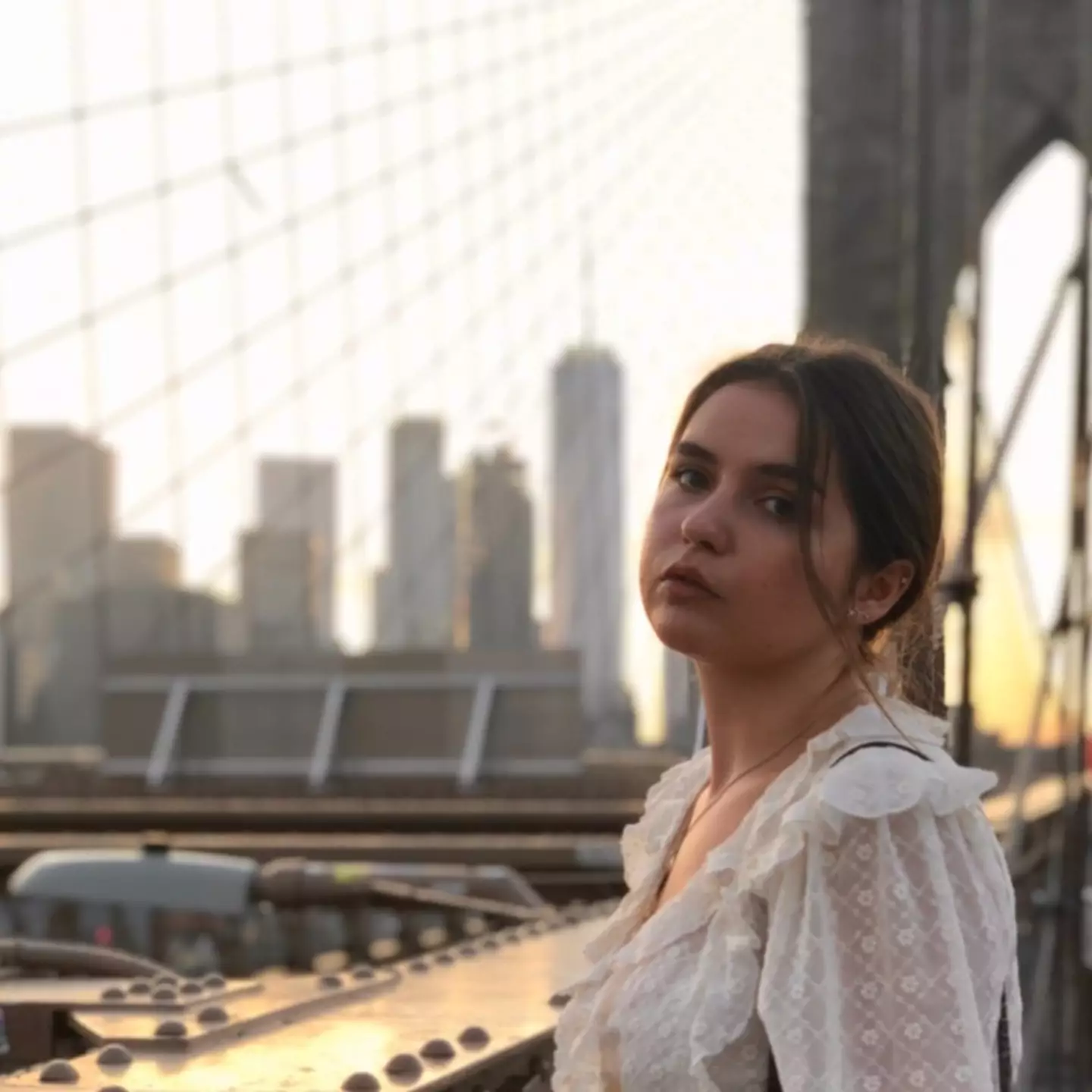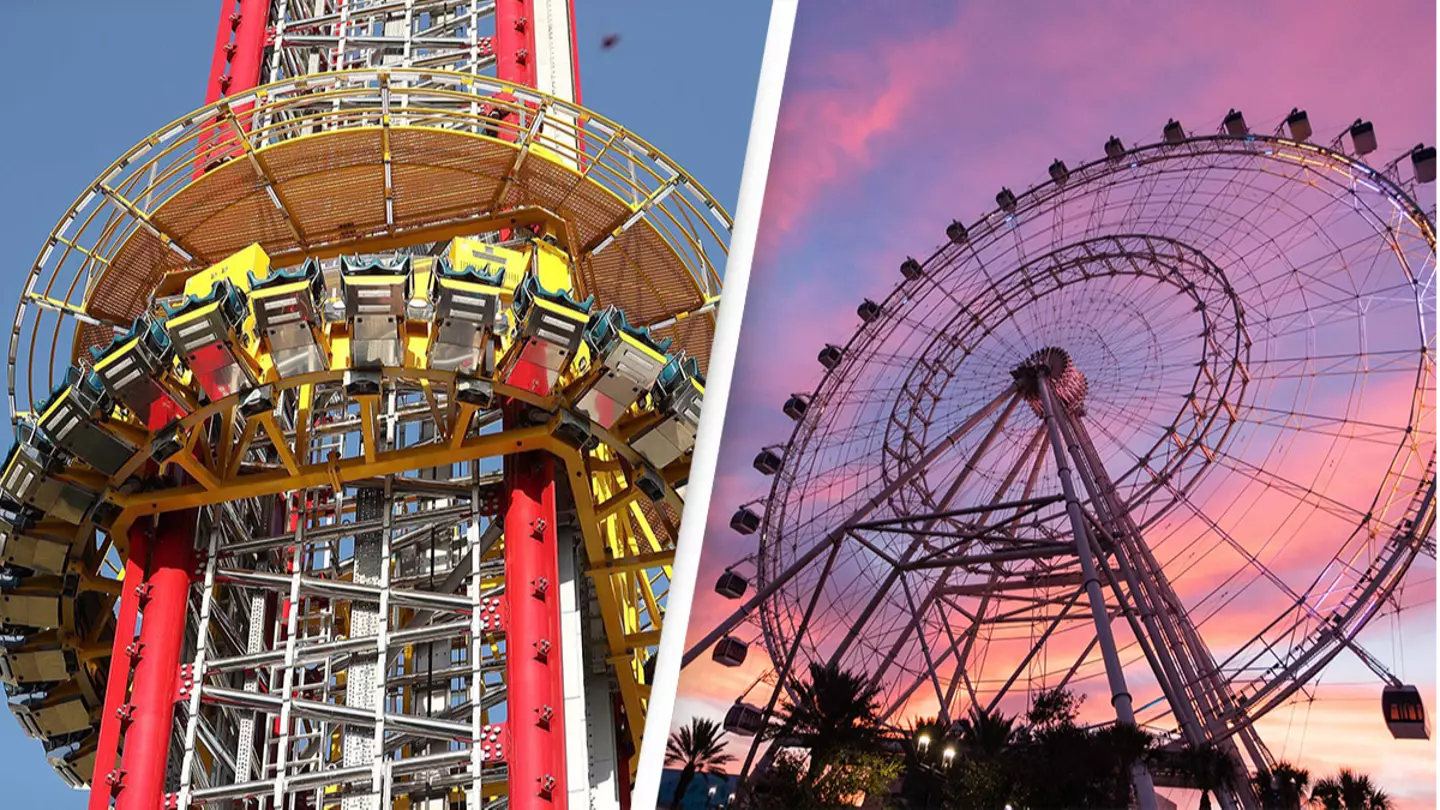
There have been 15 deaths at theme parks and amusement attractions in the US and Canada in the last four year, figures have revealed.
Critics claim the sector is almost totally unregulated – meaning a lack of safety standards has led to more than 35,000 injuries and incidents at those attractions.
As the family of Tyre Sampson, the 14-year-old who fell more than 100ft to his death from a roller coaster in Orlando's ICON Park, try to change industry standards to avoid more accidents, experts claim the industry is 'pushing back' on tighter regulations.
Advert
Sampson's parents are suing the park for damages after it emerged that the Orlando Free Fall ride had only an over-the-shoulder harness, and not a seatbelt. Putting seatbelts in each of the ride's 30 seats would have cost a total of $660, according to the legal claim filed by the family.
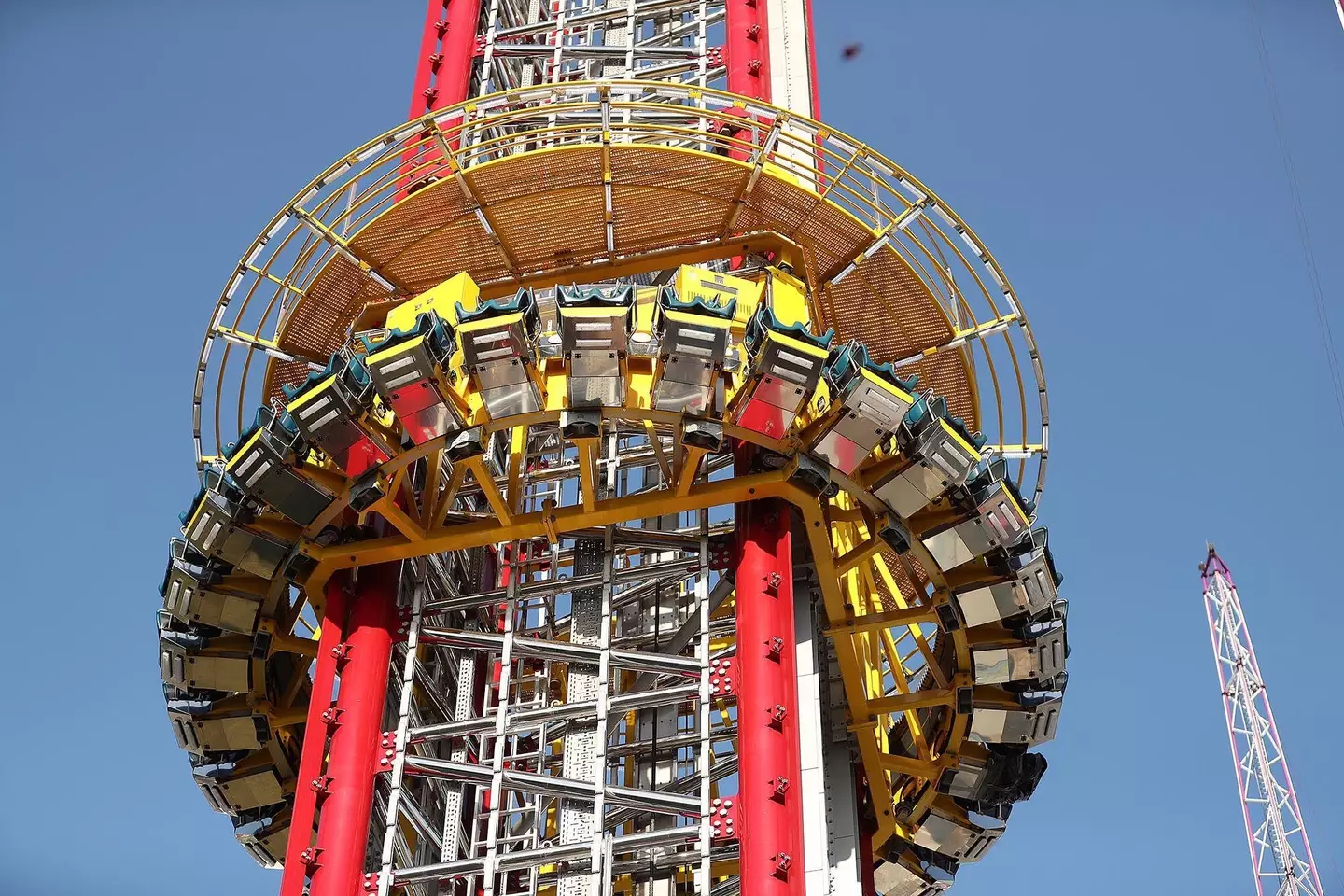
Figures from the Consumer Product Safety Commission (CPSC) said they were aware of 15 deaths associated with amusement attractions in the US and Canada.
In 2019, annual estimates for ride-related injuries ranged from 1,294 for fixed-site amusement parks, to 34,700 incidents projected for non-fixed-site parks, such as travelling fun-fairs.
Advert
These unsettling statistics and lack of consensus on how rides should be regulated leaves one question: why isn't more being done to protect people at amusement parks?
LADbible reached out to several regulatory bodies in the UK and US. One thing became startlingly clear: there's no consensus on how many injuries and deaths occur on rides each year, nor how these rides should be regulated.
Safety information for amusement parks varies widely and, even with incident estimates, there is little insight into how often rides are checked and inspected.
The clearest picture of ride safety comes from the National Safety Council (NSC), in a report prepared for the International Association of Amusement Parks and Attractions (IAAPA).
Advert
The council conducts an 'annual survey to collect and analyse ride attendance and patron injury data from facilities that operate fixed-site amusement rides'.

Fixed-site amusement rides are those that remain at one location, like the FreeFall attraction at ICON Park where Sampson tragically lost his life.
Advert
According to the NSC's survey, there were 1,294 ride-related injuries in the US and Canada in 2019 – the highest number since 2015.
That means that in the US and Canada there are just over three ride-related injuries per day at fixed-site amusement parks.
Breaking down these numbers in terms of severity, six percent of annual ride-related injuries were deemed 'serious'.
'Serious' is defined by the council as: "Meaning an injury resulting in immediate admission and hospitalization in excess of 24 hours."

Advert
However, the overall picture of ride safety becomes far murkier when taking into account non-fixed rides; these are rides that can be moved from place to place, such as travelling fairs.
While the NSC focuses on fixed-site amusement parks, the CPSC collects data on incidents involving multiple types of amusement rides. However, they do not have jurisdiction over fixed-site amusement park rides.
Based on their latest available data, from 2017 to 2019, the commission estimated there were '34,700 injuries associated with amusement attractions (including water slides)'.

"In 2020, 12,400 injuries were seen in U.S. hospital emergency departments (the large decrease likely due to Covid closures). Since 2018, CPSC is aware of 15 deaths associated with amusement attractions. Three of these deaths were associated with home inflatable structures," they added.
The significant jump from 1,294 injuries projected per year to a three-year total of 34,700 for non-fixed site rides suggests the need for greater regulation at non-fixed site parks.
While the entire industry would benefit from standardised, government-enforced regulatory procedures, according to Martin Lewison, dubbed Professor Roller Coaster by the New York Times, there's been pushback from the industry.
Lewison, an assistant professor of marketing and management who has ridden more than 1,800 different roller coasters in more than 33 different countries, said the industry 'pushed back for many years on federal oversight on fixed amusement rides'.
However, this lack of standardised regulation on amusement park rides isn't just confined to the US, as the situation in the UK seems even less comprehensive.
One of the leading authorities on public safety in the UK is the Health and Safety Executive (HSE).
However, the safety body did not have statistics on the instances of ride-related injuries when requested by LADbible.
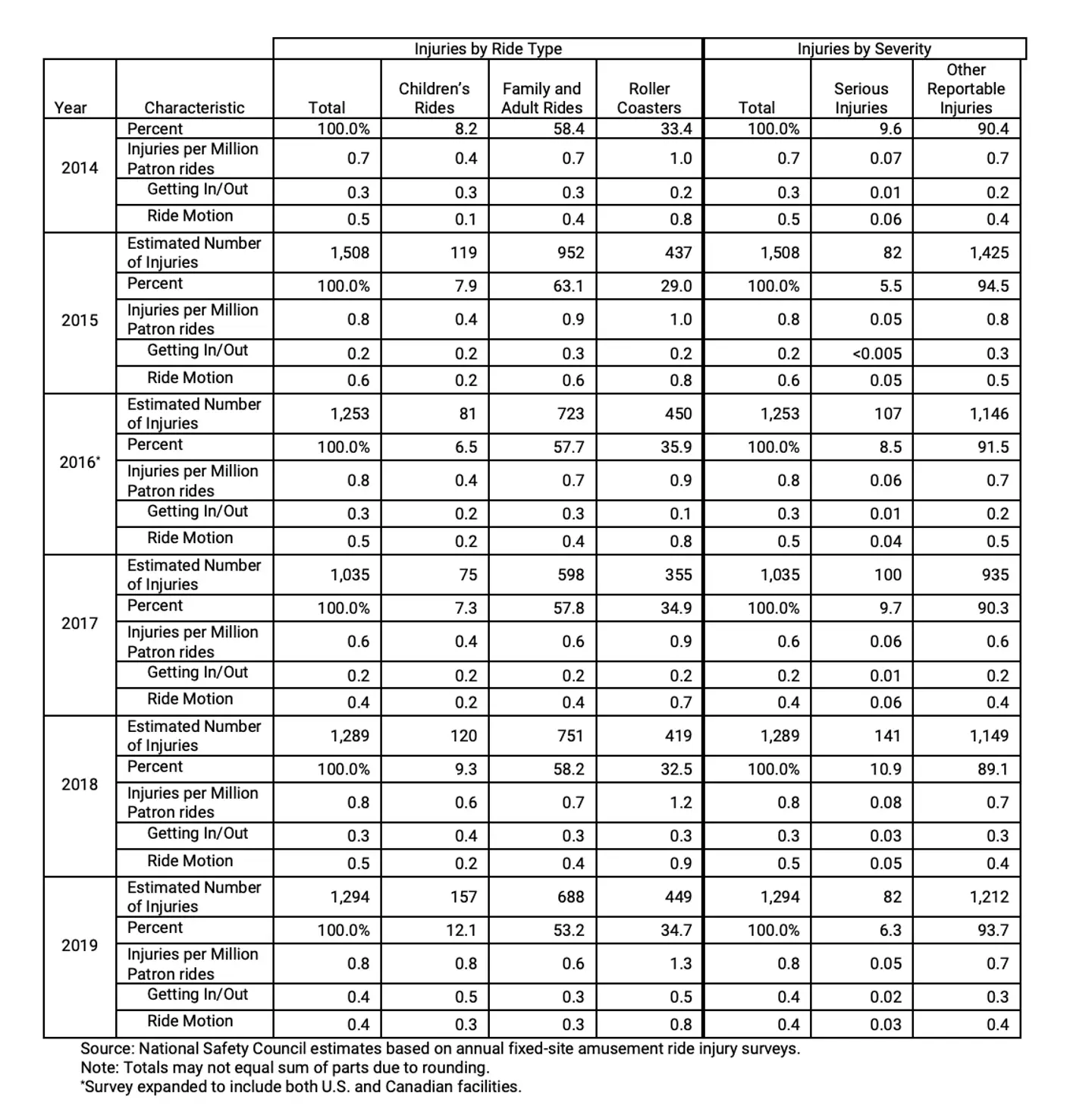
Instead, HSE noted that their reporting system is not set up to record specific information, 'making it very difficult to identify ride related injuries and deaths'.
The HSE does note, however, that: "The main risks to passengers on a device are: ejection due to the device’s motion; falls from the device; injury arising from the forces imposed by the motion of the device, including during emergency stops; passenger misuse of safety equipment."
While the executive had no specific numbers on how many of these incidents occurred, they did provide answers to general questions, like who's responsibility it is to ensure safety on rides.
"Individual businesses and operators are principally responsible for ensuring the safety of their employees and members of the public visiting fairgrounds."
While the HSE says the law 'requires that operators are adequately trained in the running and use of the amusement device and that they have suitable risk assessments and operating instructions', what constitutes 'adequately' is unclear.
The burden for training falling on individual businesses seems particularly concerning when, as Florida State Representative Geraldine Thompson notes, the young people operating Sampson's ride had just four weeks of training.
.webp)
Both in the UK and the US, unregulated and unclear safety procedures seem to be a prevalent issue.
This is something Geraldine Thompson is looking to change in legislature.
When asked what she thought could be improved, Thompson said: "Well I think training is very important for people who operate the rides. In this instance, the young people who were operating [the FreeFall ride] had been trained four weeks prior."
In addition to adequate training, Thompson is pushing for regulations so that all 'amusement rides follow the manufacturer's guidelines'.
The need for greater regulation has been underscored by a report released just last week from engineers hired by the Florida Department of Agriculture.
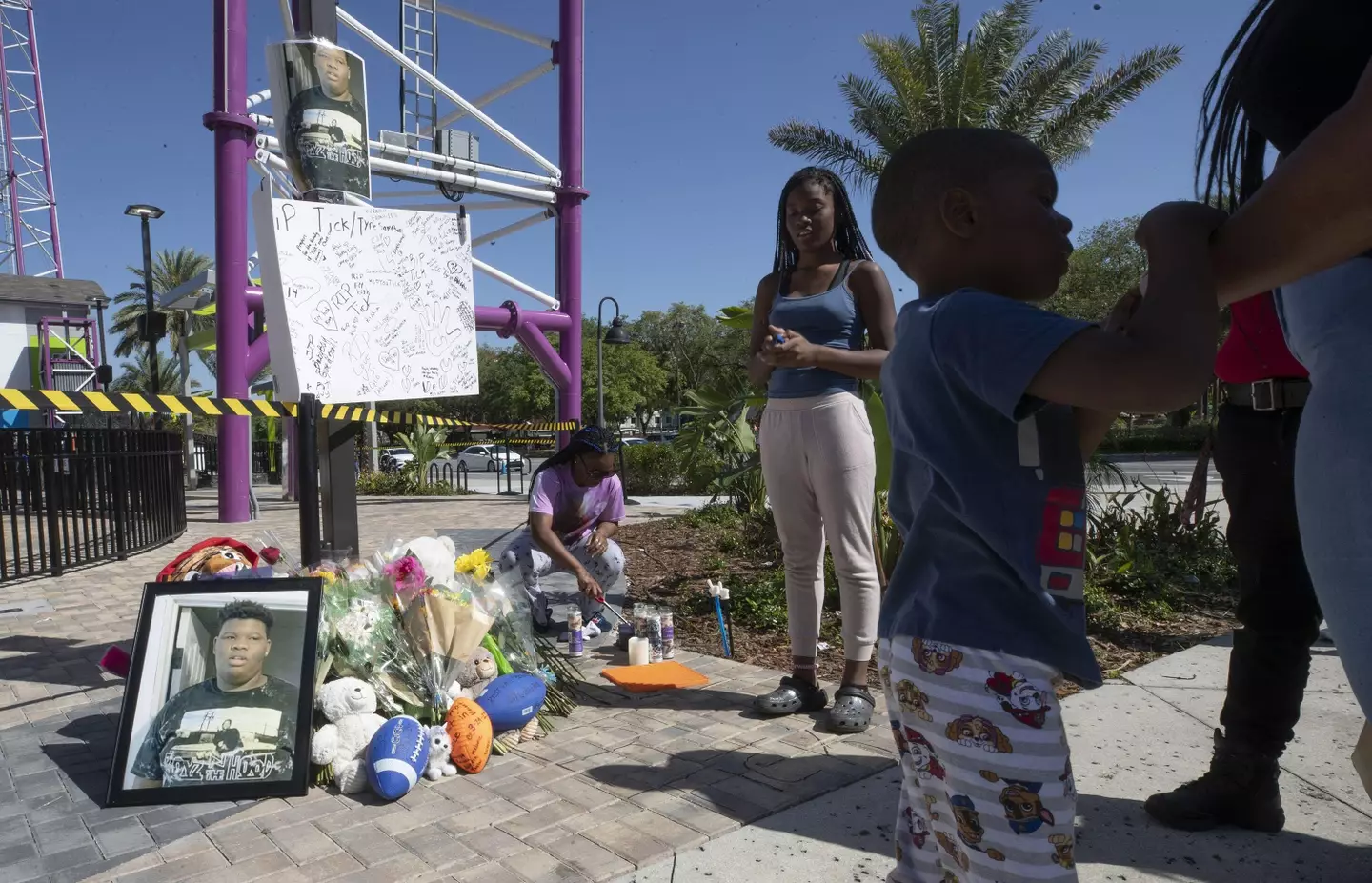
The report said that sensors on the FreeFall ride in ICON Park had been adjusted manually to double the opening for restraints on two seats.
This suggests Sampson might not have been not properly secured before his death. However, the lack of consensus surrounding ride-related safety has made one thing clear: more needs to be done to protect people at amusement parks.
Thompson, meanwhile, continues to push for greater regulations at amusement parks.
"More has to be done. We want to make sure something like [the Tyre Sampson accident] does not occur again."
If you have a story you want to tell, send it to UNILAD via [email protected]
